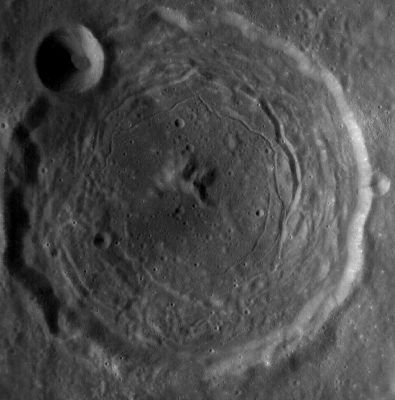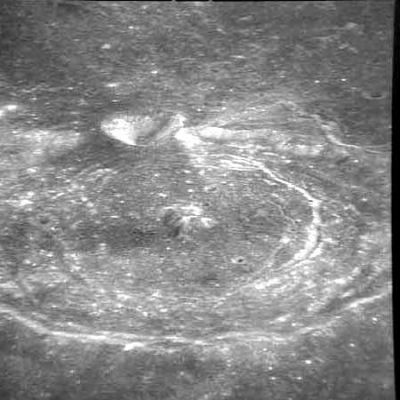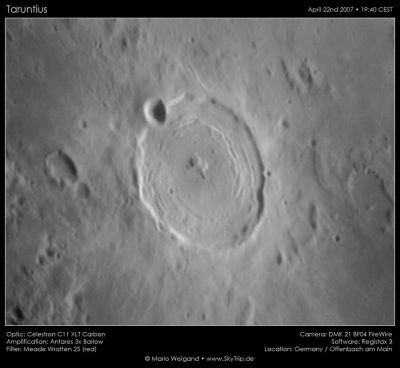Difference between revisions of "Taruntius"
| Line 13: | Line 13: | ||
|} | |} | ||
'''Left:''' ''[http://lroc.sese.asu.edu/index.html LROC]'' image WAC No. [http://wms.lroc.asu.edu/lroc/view_lroc/LRO-L-LROC-2-EDR-V1.0/M119543948ME M119543948ME]. Calibrated by [http://ltvt.wikispaces.com/Utility%20Programs#WAC_Viewer LROC_WAC_Previewer].<br /> '''Middle:''' ''[http://lpod.org/coppermine/displayimage.php?pos=-56 Apollo 10 AS10-31-4566]''<br /> '''Right:''' ''[http://lpod.org/coppermine/displayimage.php?pos=-2113 Mario Weigand]''<br /> <br /> <div id="toc"> | '''Left:''' ''[http://lroc.sese.asu.edu/index.html LROC]'' image WAC No. [http://wms.lroc.asu.edu/lroc/view_lroc/LRO-L-LROC-2-EDR-V1.0/M119543948ME M119543948ME]. Calibrated by [http://ltvt.wikispaces.com/Utility%20Programs#WAC_Viewer LROC_WAC_Previewer].<br /> '''Middle:''' ''[http://lpod.org/coppermine/displayimage.php?pos=-56 Apollo 10 AS10-31-4566]''<br /> '''Right:''' ''[http://lpod.org/coppermine/displayimage.php?pos=-2113 Mario Weigand]''<br /> <br /> <div id="toc"> | ||
| − | + | ||
| − | |||
==Images== | ==Images== | ||
[http://www.lpod.org/coppermine/thumbnails.php?album=search&type=full&search=Taruntius LPOD Photo Gallery] [http://www.lpi.usra.edu/resources/lunar_orbiter/bin/srch_nam.shtml?Taruntius%7C0 Lunar Orbiter Images] [http://www.lpi.usra.edu/resources/apollo/search/feature/?feature=Taruntius Apollo Images]<br /> Plus three "forgotten" orbital Hasselblads of '''Taruntius''''s northeastern part, photographed through one of the triangular windows of Apollo 15's LM ''Falcon'', just before docking with CSM ''Endeavour'' (of which the exposed ''Scientific Instruments Module'' (''SIM-bay'') is seen). '''Taruntius''' is the "half-crater" at the left margin of all three photographs. Research: Danny Caes.<br /> [http://www.hq.nasa.gov/office/pao/History/alsj/a15/AS15-88-11971.jpg AS15-88-11971]<br /> [http://www.hq.nasa.gov/office/pao/History/alsj/a15/AS15-88-11972.jpg AS15-88-11972]<br /> [http://www.hq.nasa.gov/office/pao/History/alsj/a15/AS15-88-11973.jpg AS15-88-11973]<br /> Apollo 11's Hasselblad [http://www.lpi.usra.edu/resources/apollo/frame/?AS11-42-6301 AS11-42-6301] shows '''Taruntius O''', and not '''Secchi K''' as mentioned in the caption. Discovery of error: Danny Caes. Discovery of depicted region's exact location: Jim Mosher.<br /> <br /> | [http://www.lpod.org/coppermine/thumbnails.php?album=search&type=full&search=Taruntius LPOD Photo Gallery] [http://www.lpi.usra.edu/resources/lunar_orbiter/bin/srch_nam.shtml?Taruntius%7C0 Lunar Orbiter Images] [http://www.lpi.usra.edu/resources/apollo/search/feature/?feature=Taruntius Apollo Images]<br /> Plus three "forgotten" orbital Hasselblads of '''Taruntius''''s northeastern part, photographed through one of the triangular windows of Apollo 15's LM ''Falcon'', just before docking with CSM ''Endeavour'' (of which the exposed ''Scientific Instruments Module'' (''SIM-bay'') is seen). '''Taruntius''' is the "half-crater" at the left margin of all three photographs. Research: Danny Caes.<br /> [http://www.hq.nasa.gov/office/pao/History/alsj/a15/AS15-88-11971.jpg AS15-88-11971]<br /> [http://www.hq.nasa.gov/office/pao/History/alsj/a15/AS15-88-11972.jpg AS15-88-11972]<br /> [http://www.hq.nasa.gov/office/pao/History/alsj/a15/AS15-88-11973.jpg AS15-88-11973]<br /> Apollo 11's Hasselblad [http://www.lpi.usra.edu/resources/apollo/frame/?AS11-42-6301 AS11-42-6301] shows '''Taruntius O''', and not '''Secchi K''' as mentioned in the caption. Discovery of error: Danny Caes. Discovery of depicted region's exact location: Jim Mosher.<br /> <br /> | ||
| Line 39: | Line 38: | ||
* Originally mapped as Copernican because of its rays but these are compositional rays (highlands material) that have reached full optical maturity and thus the crater is older than Copernicus and is now considered Eratosthenian age. (Hawke et al: Composition and origin of Coprnican Rays… Mappers Conference 2005). | * Originally mapped as Copernican because of its rays but these are compositional rays (highlands material) that have reached full optical maturity and thus the crater is older than Copernicus and is now considered Eratosthenian age. (Hawke et al: Composition and origin of Coprnican Rays… Mappers Conference 2005). | ||
* '''Taruntius''' and its satellite crater '''K''' are on the [[ALPO%20list%20of%20bright%20ray%20craters|ALPO list of bright ray craters]] | * '''Taruntius''' and its satellite crater '''K''' are on the [[ALPO%20list%20of%20bright%20ray%20craters|ALPO list of bright ray craters]] | ||
| − | * '''Taruntius B, C, F, G, H, O''' & '''P''' are thermal anomaly craters, implying youthful ages - [[Moore%20et%20al%2C%201980|Moore et al, 1980]]. Does such a concentration imply that these are all secondary craters formed at the same time? <span class="membersnap">- | + | * '''Taruntius B, C, F, G, H, O''' & '''P''' are thermal anomaly craters, implying youthful ages - [[Moore%20et%20al%2C%201980|Moore et al, 1980]]. Does such a concentration imply that these are all secondary craters formed at the same time? <span class="membersnap">- tychocrater <small>Oct 20, 2007</small></span> |
* TSI = 35, CPI = 15, FI = 25; MI =75 [[Smith%20and%20Sanchez%2C%201973|Smith and Hartnell, 1973]] | * TSI = 35, CPI = 15, FI = 25; MI =75 [[Smith%20and%20Sanchez%2C%201973|Smith and Hartnell, 1973]] | ||
<br /> | <br /> | ||
| Line 55: | Line 54: | ||
[[Alphabetical%20Index|Named Featues]] -- Prev: [[Tannerus|Tannerus]] -- Next: [[Catena%20Taruntius|Catena Taruntius]]<br /> | [[Alphabetical%20Index|Named Featues]] -- Prev: [[Tannerus|Tannerus]] -- Next: [[Catena%20Taruntius|Catena Taruntius]]<br /> | ||
---- | ---- | ||
| − | + | </div> | |
Revision as of 16:54, 15 April 2018
Contents
Taruntius, with Rimae Taruntius on its floor
|
Lat: 5.48°N, Long: 46.54°E, Diam: 57.32 km, Depth: 1.1 km, Rükl: 37, Eratosthenian | ||
Middle: Apollo 10 AS10-31-4566
Right: Mario Weigand
Images
LPOD Photo Gallery Lunar Orbiter Images Apollo Images
Plus three "forgotten" orbital Hasselblads of Taruntius's northeastern part, photographed through one of the triangular windows of Apollo 15's LM Falcon, just before docking with CSM Endeavour (of which the exposed Scientific Instruments Module (SIM-bay) is seen). Taruntius is the "half-crater" at the left margin of all three photographs. Research: Danny Caes.
AS15-88-11971
AS15-88-11972
AS15-88-11973
Apollo 11's Hasselblad AS11-42-6301 shows Taruntius O, and not Secchi K as mentioned in the caption. Discovery of error: Danny Caes. Discovery of depicted region's exact location: Jim Mosher.
Maps
(LAC zone 61C2) LAC map Geologic map AIC map LTO map
- IAU page: Taruntius
Description
Description: Elger
(IAU Directions) TARUNTIUS.--Notwithstanding its comparatively low walls, this ring-plain, 44 miles in diameter, is a very conspicuous object under a rising sun. Like Vitello and a few other formations, it has an inner ring on the floor, concentric with the outer rampart, which I have often seen nearly complete under evening illumination. There is a small bright crater on the S.W. wall, and a larger one on the crest of the N.W. wall, with a much more minute depression on the E. of it, the intervening space exhibiting signs of disturbance. The upper portion of the wall is very steep, contrasting in this respect with the very gentle inclination of the glacis, which on the S. extends to a distance of at least 30 miles before it sinks to the level of the surrounding country, the gradient probably being as slight as 1 in 45. Two low dusky rings and a long narrow valley with brilliant flanks are prominent objects on the plain W. of Taruntius under a low evening sun.
Description: Wikipedia
Additional Information
- Depth data from Kurt Fisher database
- Pike, 1976: 1.1 km
- Westfall, 2000: 1.1 km
- Viscardy, 1985: 1.2 km
- Cherrington, 1969: 0.91 km
- Central peak height
- Sekiguchi, 1972: 1.9 km on the west side of the peak, 0.7 km on the east. - fatastronomer fatastronomer
- East rim slope 29° (Pohn, 1963)
- Originally mapped as Copernican because of its rays but these are compositional rays (highlands material) that have reached full optical maturity and thus the crater is older than Copernicus and is now considered Eratosthenian age. (Hawke et al: Composition and origin of Coprnican Rays… Mappers Conference 2005).
- Taruntius and its satellite crater K are on the ALPO list of bright ray craters
- Taruntius B, C, F, G, H, O & P are thermal anomaly craters, implying youthful ages - Moore et al, 1980. Does such a concentration imply that these are all secondary craters formed at the same time? - tychocrater Oct 20, 2007
- TSI = 35, CPI = 15, FI = 25; MI =75 Smith and Hartnell, 1973
Ancient Taruntius-sized crater west-northwest of Taruntius?
SLC-map A4 shows the remains of (what seems to be) some sort of Taruntius-sized crater west-northwest of Taruntius (between Taruntius and Lawrence).
Nomenclature
Lucius Taruntius Firmanus (sometimes Lucius Tarrutius of Firmum) (unkn-fl. 86 BC) was a Roman philosopher, mathematician, and astrologer.
LPOD Articles
Little Detective. Far Eastern Tranquillitatis Terrific Taruntius Excellent Taruntius
Lunar 100
L31: Young floor-fractured crater.
Bibliography
A Portfolio of Lunar Drawings (Harold Hill), pages 22, 23.
Named Featues -- Prev: Tannerus -- Next: Catena Taruntius


